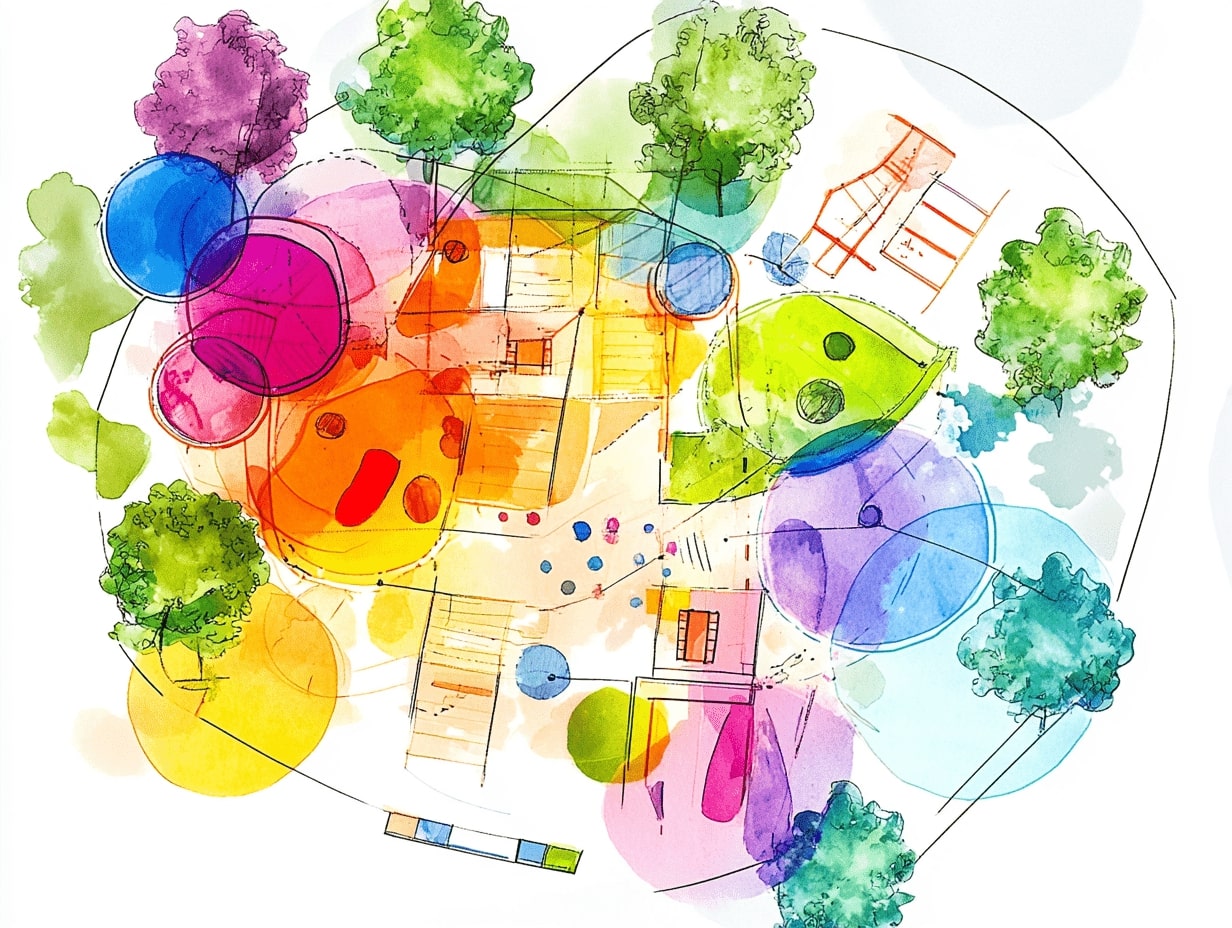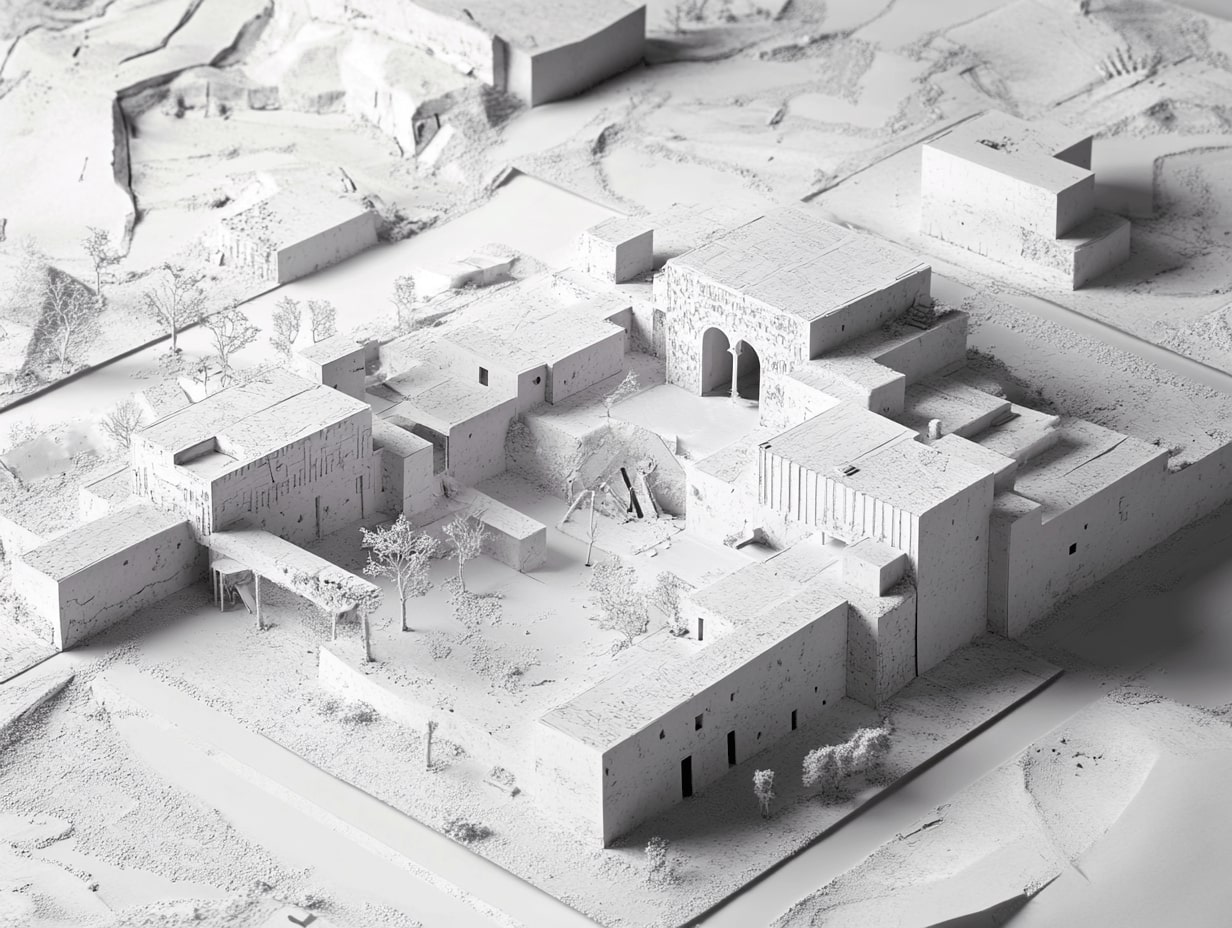- Home
- Articles
- Architectural Portfolio
- Architectral Presentation
- Inspirational Stories
- Architecture News
- Visualization
- BIM Industry
- Facade Design
- Parametric Design
- Career
- Landscape Architecture
- Construction
- Artificial Intelligence
- Sketching
- Design Softwares
- Diagrams
- Writing
- Architectural Tips
- Sustainability
- Courses
- Concept
- Technology
- History & Heritage
- Future of Architecture
- Guides & How-To
- Art & Culture
- Projects
- Interior Design
- Competitions
- Jobs
- Store
- Tools
- More
- Home
- Articles
- Architectural Portfolio
- Architectral Presentation
- Inspirational Stories
- Architecture News
- Visualization
- BIM Industry
- Facade Design
- Parametric Design
- Career
- Landscape Architecture
- Construction
- Artificial Intelligence
- Sketching
- Design Softwares
- Diagrams
- Writing
- Architectural Tips
- Sustainability
- Courses
- Concept
- Technology
- History & Heritage
- Future of Architecture
- Guides & How-To
- Art & Culture
- Projects
- Interior Design
- Competitions
- Jobs
- Store
- Tools
- More
Exploring Planimetric Diagrams in Architecture: A Guide to Top-Down Design
In the world of architecture, understanding the blueprint of a structure's design is crucial for both architects and clients. Among the various tools at our disposal, the architectural planimetric diagram stands out as a fundamental element that breaks down complex designs into understandable visuals.

In the world of architecture, understanding the blueprint of a structure’s design is crucial for both architects and clients. Among the various tools at our disposal, the architectural planimetric diagram stands out as a fundamental element that breaks down complex designs into understandable visuals. These diagrams offer a bird’s eye view of a project, detailing the layout without the distraction of elevation or depth, allowing for a clear comprehension of spatial relationships and traffic flow within the design.
We often encounter planimetric diagrams in the early stages of design, where the focus is on the arrangement of spaces and the interaction between different areas of a building or site. They serve as a guide for developing more detailed plans and are essential for visualizing the overall organization of spaces. By simplifying the complexity of architectural designs, planimetric diagrams enable us to make informed decisions about space utilization, circulation, and the integration of structural elements.

Table of Contents
ToggleExploring the Planimetric Diagram in Architecture
The Essence of Planimetric Representation
Planimetric diagrams serve as the foundation of architectural visualization, providing a top-down view that captures the layout of spaces in a clear and simplified manner. At its core, a planimetric representation strips away the complexities of elevation and perspective, focusing solely on the horizontal plane. This approach allows us to grasp the spatial organization and relationships between various elements of a project quickly. Whether it’s determining the flow through a building or understanding the arrangement of outdoor spaces, planimetric diagrams offer an invaluable tool for architects, designers, and stakeholders. Their utility extends beyond mere layout planning; they are instrumental in the conceptual phase, where the spatial logic and functional distribution of a project are determined.
Key Characteristics of Planimetric Diagrams
Planimetric diagrams distinguish themselves through several key features that make them indispensable in the field of architecture. Firstly, these diagrams are defined by their clarity and simplicity. By eliminating the third dimension, they present a straightforward depiction of a site or a building’s footprint, making it easier to communicate ideas and make informed decisions. Another characteristic is their focus on spatial relationships and functional zones. Planimetric diagrams excel at showing how different areas of a project interact with each other, highlighting connections and separation between spaces. This is crucial for effective circulation planning and ensuring that the layout aligns with the intended use of each space.
Moreover, planimetric diagrams often incorporate annotations and symbols to convey additional information about the project, such as entrances, pathways, and significant landscape features. This added layer of detail enhances the diagram’s utility as a tool for discussion and analysis during the planning stages. Lastly, these diagrams are versatile; they can be adapted to various scales and contexts, from detailed site plans to broader master planning efforts. This flexibility ensures that planimetric diagrams remain an essential part of the architect’s toolkit, adaptable to the unique needs of each project.

Purpose and Functionality of Planimetric Diagrams
Design Concept Communication
Planimetric diagrams excel in articulating design concepts. They convert complex spatial arrangements into understandable visuals, making it easier for architects, clients, and stakeholders to grasp the initial vision of a project. By stripping away the third dimension, these diagrams focus attention on the layout and flow of spaces. This allows for a straightforward presentation of how different areas of a project relate to each other, effectively communicating the core concept of the design. Through planimetric diagrams, we convey not just the physical layout but also hint at the functional zoning and the intended use of each space, ensuring that the design concept is clearly understood by all parties involved.
Spatial Organization and Analysis
The essence of planimetric diagrams lies in their ability to organize and analyze spatial relationships. They serve as a tool for architects to dissect and examine the layout of spaces, offering insights into the efficiency of the design. By providing a bird’s-eye view, these diagrams facilitate an understanding of the spatial dynamics within a project, including circulation patterns, adjacency requirements, and the integration of outdoor and indoor spaces. The clarity offered by planimetric diagrams enables us to optimize space utilization, enhance functionality, and create environments that are cohesive and aligned with the project’s goals.
Collaborative Tools for Design Teams
In the realm of architectural design, collaboration is key. Planimetric diagrams act as a common language among design team members, bridging the gap between different disciplines involved in a project. These diagrams allow for effective teamwork by presenting a unified vision of the spatial layout that can be analyzed, critiqued, and refined collaboratively. They facilitate discussions around spatial strategies, encourage the exchange of ideas, and support consensus-building among architects, engineers, landscape designers, and clients. By leveraging planimetric diagrams as collaborative tools, we ensure that all team members have a clear understanding of the project, leading to more cohesive and integrated design solutions.

Creating an Effective Planimetric Diagram
In crafting an effective planimetric diagram, it’s vital to hone in on the components and methodologies that elevate the clarity and utility of the design. These diagrams serve as the backbone for understanding spatial relationships and configurations in architecture. By focusing on essential elements and techniques for enhanced clarity and aesthetics, we aim to guide architects and designers in producing diagrams that are not only informative but visually compelling.
Essential Elements to Include
First and foremost, the key to an impactful planimetric diagram lies in the inclusion of specific elements that convey the necessary information about the space.
- Scale and North Arrow: Indicators such as scale and a north arrow provide viewers with a sense of orientation and size, essential for comprehending the layout accurately.
- Defined Spaces: Clearly delineating each area, whether it’s rooms in a building or different zones in a landscape, ensures that the purpose and boundaries of spaces are understood at a glance.
- Annotations and Labels: Incorporating annotations and labels helps in demystifying complex elements, making technical details accessible to all stakeholders.
- Dimension Lines: Including dimension lines can offer precise measurements of spaces and distances, facilitating a deeper understanding of the layout.
- Pathways and Circulation: Showing pathways and circulation routes aids in visualizing how users will navigate the space, highlighting interactions between different areas.
Techniques for Enhanced Clarity and Aesthetics
Beyond the inclusion of key elements, the ways in which these components are visualized can dramatically affect the diagram’s effectiveness.
- Contrast and Color Coding: Using contrast and color coding can draw attention to different areas or aspects of the diagram, making it easier to distinguish between various elements.
- Simplified Icons and Symbols: Employing simplified icons and symbols for furniture, landscaping, and architectural features reduces clutter, enabling viewers to focus on the spatial layout.
- Hierarchy Through Text Size and Weight: Differentiating information through variations in text size and weight can create a clear hierarchy, guiding the viewer’s eye to the most critical details first.
- Consistent Line Weights: The application of consistent line weights across the diagram contributes to a cohesive and polished look, enhancing the overall aesthetic appeal.
- Strategic Shading and Textures: Applying shading and textures selectively can convey additional information such as materiality or the use of space without overwhelming the diagram.
By integrating these essential elements and techniques, planimetric diagrams can transform from mere technical drawings to invaluable tools in the design process. They not only facilitate a deeper understanding of the project among team members and stakeholders but also assist in identifying potential design opportunities and challenges early on. Through careful consideration of clarity and aesthetics, we can elevate planimetric diagrams into powerful instruments for communication and collaboration in architecture.

Comparing Planimetric Diagrams with Other Architectural Diagram Types
In the realm of architectural visualization, understanding the different diagram types and their unique contributions to the design process is paramount. Specifically, planimetric diagrams, with their distinctive focus on spatial layouts from a bird’s-eye view, offer a clear contrast to other architectural diagram types such as sectional and axonometric diagrams. Here, we’ll compare these diagram types to highlight how each serves its purpose in architectural planning and design.
Sectional Versus Planimetric Diagrams
When comparing sectional to planimetric diagrams, it’s essential to recognize the different perspectives and insights they provide in architectural design. Sectional diagrams cut through the structure vertically, offering a side view that reveals the internal distribution of spaces across different levels. This type of diagram excels in showcasing the relationships between various floors, the height of spaces, and the integration of building systems like staircases and elevators. It offers insights into the vertical dimension of a space that planimetric diagrams cannot, making it invaluable for understanding the three-dimensional aspect of buildings.
On the other hand, planimetric diagrams provide a top-down view, focusing on the layout of spaces on a single level without the influence of elevation or perspective. This clarity and simplicity make planimetric diagrams especially effective in the early stages of design, allowing for easy manipulation of spatial arrangements and clear communication of the ground plan layout to both design teams and clients. While sectional diagrams detail vertical relationships and structural elements, planimetric diagrams excel in spatial organization, functional zoning, and circulation planning on a horizontal plane.

The Role of Axonometric Diagrams alongside Planimetrics
Axonometric diagrams present yet another valuable perspective, combining elements of both planimetric and sectional diagrams but with distinct advantages. These diagrams project the image of an object (such as a building) as viewed from a skew direction in order to reveal multiple facets of the object simultaneously. This means axonometric diagrams can show a building’s layout (like planimetric diagrams) while also depicting its three-dimensional aspects (similar to sectional diagrams), but without the distortion of perspective.
Integrating axonometric diagrams alongside planimetrics expands an architect’s toolbox by providing a comprehensive visualization that includes both the precise organization of spaces and a clear sense of form and volume. Axonometric diagrams reinforce the spatial relationships highlighted in planimetric diagrams with the added benefit of three-dimensional understanding, enhancing communication about complex spatial and structural concepts. They serve as a bridge between the abstract, top-down view of planimetrics and the more detailed, specific perspectives offered by sectional diagrams.
The Digital Evolution of Architectural Diagrams
The Impact of Digitalization on Planimetric Diagram Creation
The digitalization of architectural drawing and diagram creation has had a profound impact on planimetric diagrams, specifically in how they are conceived, iterated, and communicated. Digital tools have democratized the creation of these diagrams, making them more accessible to architects and designers at any skill level. As a result, the experimentation and iteration process has become more dynamic and nuanced, empowering architects to explore a broader range of spatial scenarios before settling on a final design. The ability to easily modify and adjust diagrams without the need to start from scratch each time facilitates a more inventive and exploratory design process. Moreover, digitalization has enhanced the communicative value of planimetric diagrams. With these tools, architects can produce diagrams that are not only more accurate but also visually compelling, making it easier to convey complex design intents to clients, contractors, and stakeholders. Digital diagrams can also be shared more widely and efficiently, whether through cloud-based platforms or via digital presentations, ensuring that all parties involved in a project have up-to-date information. This level of accessibility and clarity in communication helps in aligning expectations and streamlining the decision-making process.
Together, these advancements in architecture software tools and the impact of digitalization on diagram creation mark a significant shift in the way architectural designs are initiated, developed, and communicated. The digital evolution of architectural diagrams has not only enhanced the efficiency and precision of architectural planning but also expanded the possibilities for creative expression in the early stages of design.
- advanced architectural diagrams
- architectural design guide
- Architectural Diagrams
- architectural drawing techniques
- Architectural Planning
- architecture
- architecture visualization
- building plan illustrations
- design techniques
- planimetric design
- Planimetric diagrams
- planimetric diagrams architecture
- planimetric map architecture
- top view architecture plans
- top-down design
- top-down design architecture
4 Comments
Submit your architectural projects
Follow these steps for submission your project. Submission FormLatest Posts
Top 6 Software Architecture Diagram Secret Tricks Every CS Student Should Know in 2025-26
Read this article to learn simple and effective ways to create software...
Architecture Site Analysis Site Visit: A Guide to Better Design and Sustainability
Discover the importance of architecture site analysis and site visits in creating...
Unlocking Creativity: The Power of Architecture Bubble Diagrams in Design Process
Discover the vital role of bubble diagrams in architecture, enhancing clarity and...
Essential Tips for Evaluating Your Architectural Site Analysis for Successful Projects
Discover the key to successful architectural design with a thorough evaluation of...












This article talks about planimetric diagrams in architecture. It seems useful for architects to understand designs better. I didn’t know much about this before.
I really liked this article! The way it explains planimetric diagrams made it so easy to understand. I never knew they were so important in architecture. Thanks for sharing!
This article explains the importance of planimetric diagrams in architecture. They help architects and clients understand building designs by providing a clear top-down view. The diagrams simplify complex layouts, showing how different spaces connect and function together. This makes it easier to make decisions during the design process.
This article explains how important planimetric diagrams are in architecture. They help architects and clients understand building designs from a top view. It makes it easier to see how different spaces connect and how people will move around. This is helpful when planning a project.